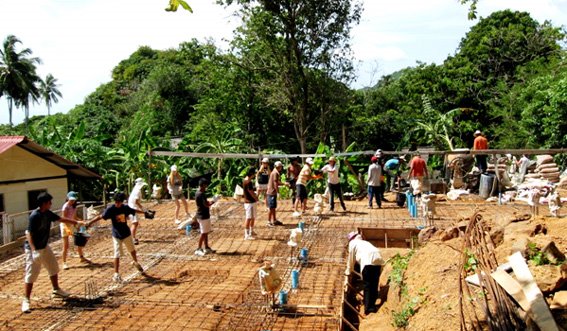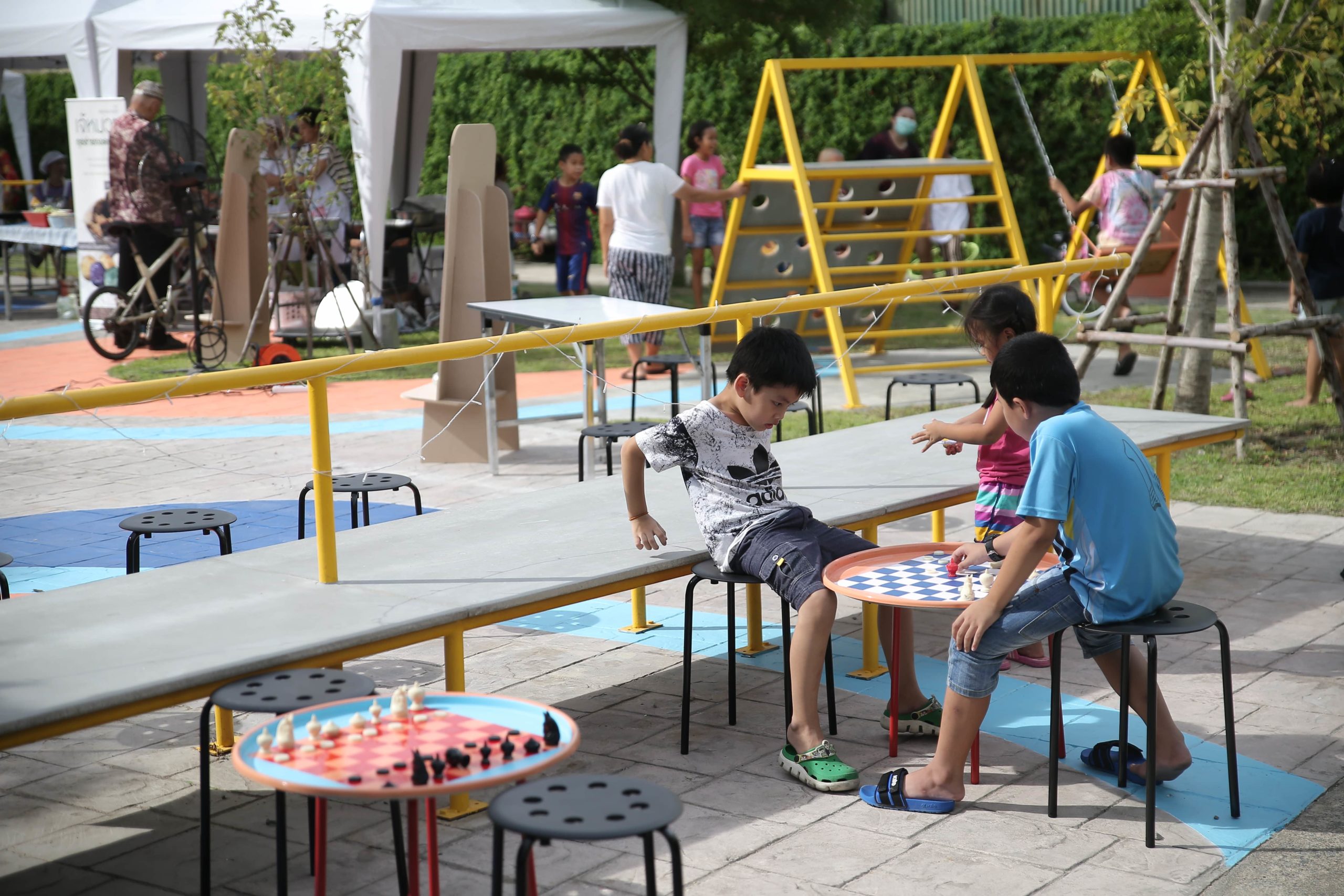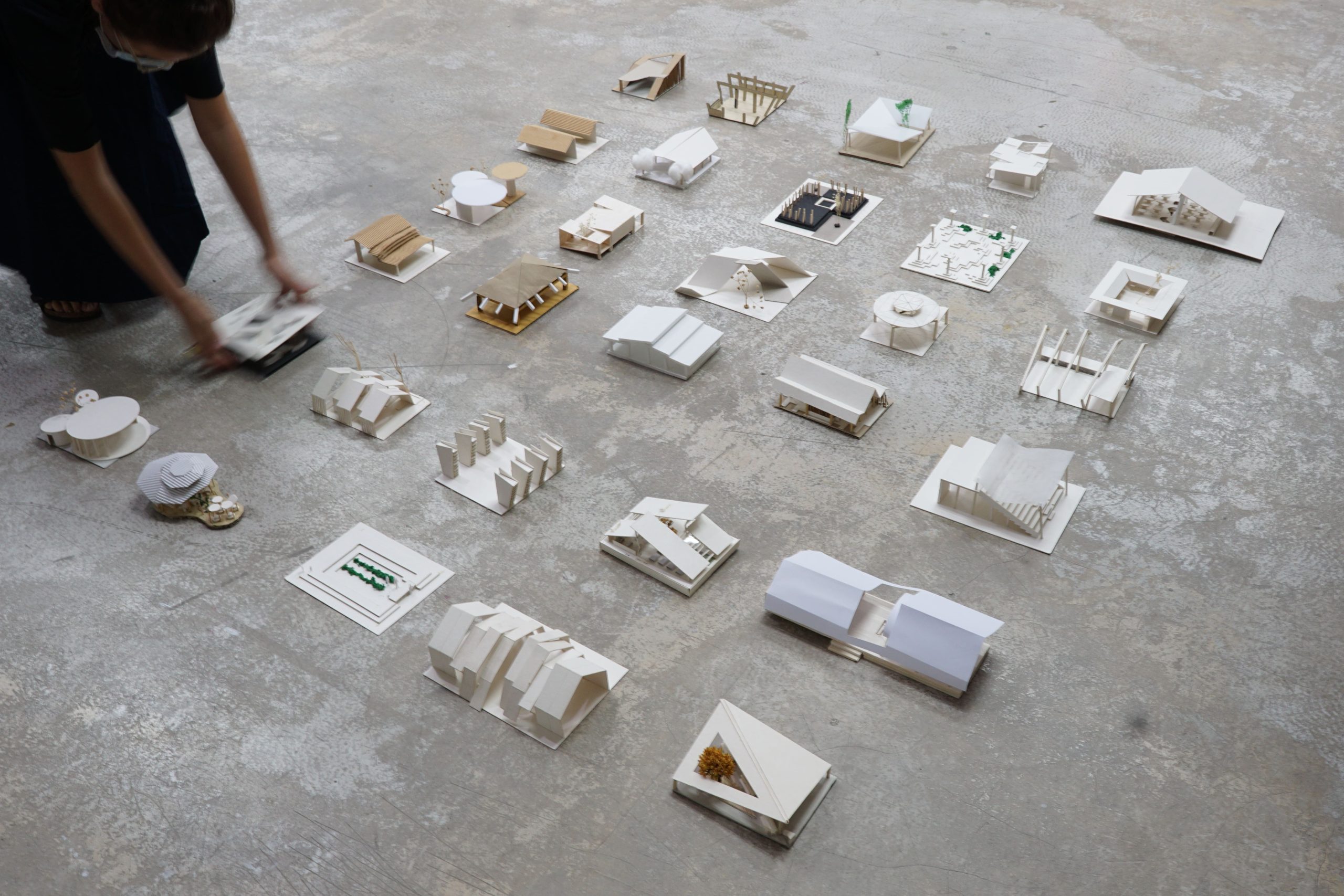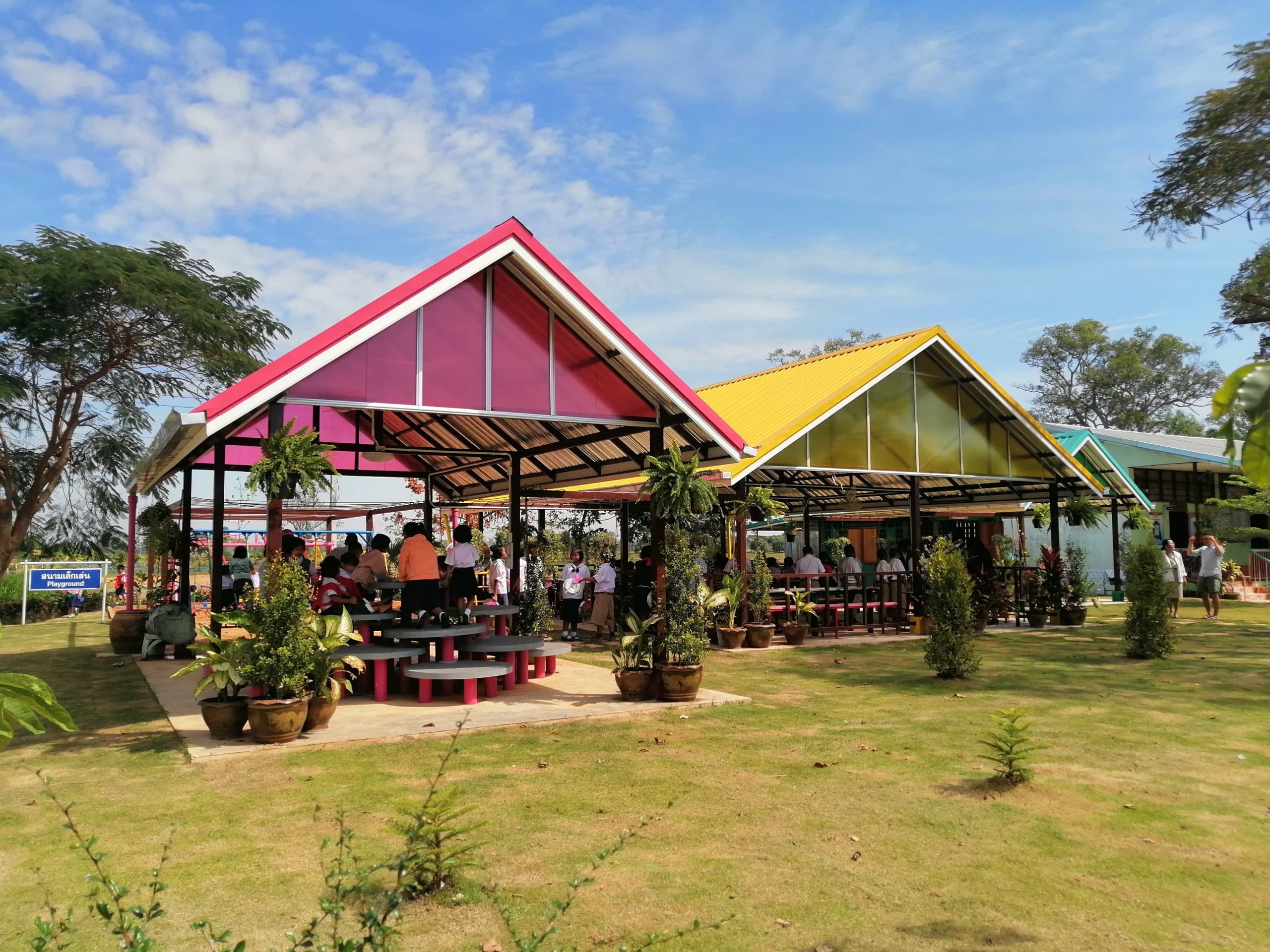When seen from above, Roi Et appears to be an endless patchwork of agricultural fields. The site for the project is located in this rich landscape, with a chicken coop, concrete cylinders, a religious monument, and a playground unconventionally defining its boundaries. The design aims to be more than a canteen that is only used for meals. It is a multi-purpose space that also becomes a place for learning and play outside of lunchtime. Conceptually, the project weaves the natural world into the Baan Non Wittayapat school campus by promoting natural ventilation on the site and framing views of the surrounding nature. Under the three roofs, children can take ownership of the space in unexpected ways which enables freedom and creativity to flourish.

Paul Francis Feeney
Marie-Louise Raue
Mitsubishi Electric Thailand
K. Thanakrit and his team
Notice: Undefined index: collaborators in /var/www/vhosts/www.inda.arch.chula.ac.th/httpdocs/experimental-projects/wp-content/themes/tailwindtheme/theme/single-project.php on line 111
Satida Adsavakulchai
Chinnapat Asavabenya
Lalida Attawetkul
Santhila Chanoknamchai
Tanyadhorn Dumrongkijkarn
Apisada Hanbunjerd
Thanvarat Jamnongnoravut
Sakaokaew Jindawitchu
Waris Majitnapakul
Wichayes Maneepakhathorn
Navapol Montong
Kamolthip Polsamak
Kodchakorn Promjaree
Siwakarn Sabpaisarn
Nicharee Sammapan
Prao Sirisaksopit
Boonyavee Sureephong
Premmika Taechavarangkul
Pichamon Taksinawong
Manachanok Tantraporn
Peera Tayanukorn
Choomcherd Virapat
Related Projects:

PHI PHI ISLAND
The Baan Laem Tong School serves the local communities on the island of Phi Phi Don. The majority of children attending this small primary school are from the "Sea Gypsy Village" on Laem Tong beach. They are currently overwhelmed by the rapid development of the tourist industry around Leam Tong (Tong Cape). The community, consisting of approximately 50 families, primarily sustains themselves by providing long tail boat services for tourists. Due to their limited primary education, it is extremely challenging for them to work at the nearby five-star hotels. The Baan Leam Tong School only offers education up to the primary school level. For higher education opportunities, students have to travel to the mainland. The Baan Leam Tong International Community Resource Center project aims to provide a place for those who are unable to pursue higher education to receive vocational training from volunteers within the international community. These volunteers would also have accommodation at the facility. A group of INDA students, along with Assistant Professor Rachaporn Choochuey and students from Chulalongkorn University's Thai architecture program, visited the site to lend a hand with the construction.

Ephemeral Events
This design-build project focused on the production of a single pop-up event held in the Nang Loeng district. Students became both designers and organizers, curating a public event and the infrastructure needed to support that event, such as urban furniture, market stalls, public amenities, and artist installations. During the development of the project, students conducted a series of community engagement meetings and mapping workshops, understanding the identity and values embedded in the neighborhood. Taking on the role of festival organizers, the students independently coordinated the design and promotion of media content, met with the district office and police to establish site permissions, and prepared the site for all of its potential infrastructural needs. Throughout the month-long process, students worked directly with community leaders, market vendors, arts and crafts specialists, and local cultural hubs to curate a series of interactive workshops, where the public was invited to learn about the identity of Nang Loeng through participatory events. These workshops included desserts made from banana leaves, sewing methods with Ban Narasilp, dancing workshops with Khon performers and ballroom instructors, Thai chess instructions with local champions, and other food-related crafts. During the opening, the public was invited to participate in a live “memory wall” where responses to a series of questions on the past, present, and future of Nang Loeng were displayed for collective reflection.


